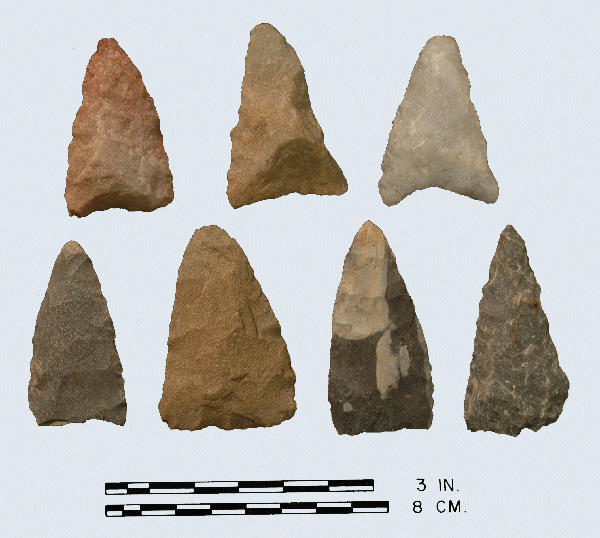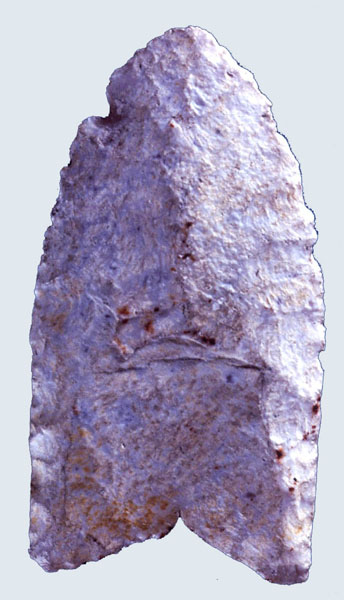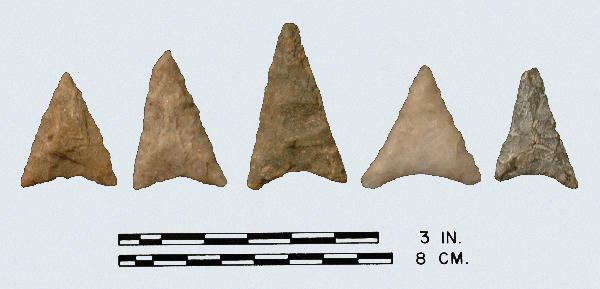
Badin: Top Row: quartzite, quartzite, quartz; Bottom Row: rhyolite, quartzite, rhyolite, rhyolite.
Middle Woodland
Defining Attributes
The Badin is a large, crudely made triangular point.
Chronology
The Badin point dates to the Middle Woodland period (500 to 1 BCE). The Badin and Yadkin point types were found in the same zones at the Doerschuk Site in the Piedmont of North Carolina. Coe (1964) explains that although it is possible that the Badin might have been a crude and unfinished form of the Yadkin point, this does not seem to have been the case. The distribution of the Badin at the Doerschuk Site indicated that the Badin is earlier than the Yadkin, and these two types differed greatly in the material used and technique of manufacture. .
Description
- Blade: The blade is triangular, and the sides are usually straight but occasionally rounded.
- Base: The base is usually concave and thinned, but occasionally straight.
- Size: Width ranges from 25 to 40 mm. with an average of 35 mm.
- Technique of manufacture: Direct percussion, not re-touched or otherwise finished by secondary chipping. Flake scars are large, broad, and shallow. .
Discussion
Mouer (1986) described a provisional type, Large Crude Triangle that is similar to the Badin point. He states that ‘many in the Virginia Commonwealth collection appear to be broken in process, or to be preforms… ‘ This again raises the issue as to whether the Badin point is a completed point or an unfinished form.
Defined in Literature
Coe (1964) originally defined the type based on points recovered from the Doerschuk Site in the Piedmont of North Carolina.
References



